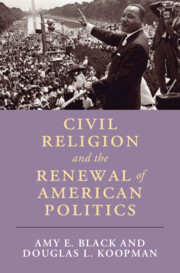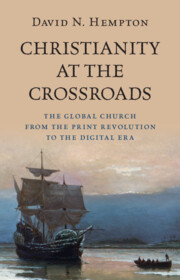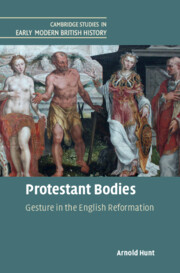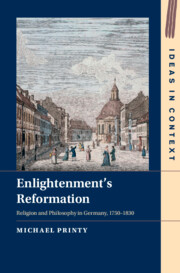Refine search
Actions for selected content:
87 results
5 - An Ethical Fulcrum: From Participation in the Body of Christ to the Happy Self
-
- Book:
- The Capitalist Self
- Published online:
- 12 October 2025
- Print publication:
- 30 October 2025, pp 197-225
-
- Chapter
- Export citation

Civil Religion and the Renewal of American Politics
-
- Published online:
- 09 October 2025
- Print publication:
- 23 October 2025
9 - ‘In the Form of the Baptists’
-
- Book:
- The Yoruba Are on a Rock
- Published online:
- 18 September 2025
- Print publication:
- 09 October 2025, pp 276-312
-
- Chapter
- Export citation
5 - ‘Acquaintances and Countrymen’
-
- Book:
- The Yoruba Are on a Rock
- Published online:
- 18 September 2025
- Print publication:
- 09 October 2025, pp 161-187
-
- Chapter
- Export citation
Chapter 5 - The Bookish Sensorium
-
- Book:
- How the World Became a Book in Shakespeare's England
- Published online:
- 09 August 2025
- Print publication:
- 14 August 2025, pp 160-190
-
- Chapter
- Export citation
2 - Religious Networks in the Reformation Era
-
- Book:
- Christianity at the Crossroads
- Published online:
- 19 May 2025
- Print publication:
- 31 July 2025, pp 45-75
-
- Chapter
- Export citation
Chapter 1 - Domestic Religion in Seventeenth- and Eighteenth-Century London
-
- Book:
- Birth, Death, and Domestic Religion in Early Modern London
- Published online:
- 17 July 2025
- Print publication:
- 31 July 2025, pp 28-63
-
- Chapter
- Export citation
Introduction
-
- Book:
- Christianity at the Crossroads
- Published online:
- 19 May 2025
- Print publication:
- 31 July 2025, pp 1-12
-
- Chapter
- Export citation
Chapter 14 - Religion
- from Part II - Social Contexts
-
-
- Book:
- Sean O'Casey in Context
- Published online:
- 23 June 2025
- Print publication:
- 10 July 2025, pp 150-158
-
- Chapter
- Export citation
4 - Protestantism and Catholicism in German Postwar Reconstruction
-
- Book:
- How Economic Ideas Evolve
- Published online:
- 06 June 2025
- Print publication:
- 10 July 2025, pp 96-128
-
- Chapter
- Export citation
7 - Conclusion
-
- Book:
- How Economic Ideas Evolve
- Published online:
- 06 June 2025
- Print publication:
- 10 July 2025, pp 176-188
-
- Chapter
- Export citation
1 - Introduction
-
- Book:
- How Economic Ideas Evolve
- Published online:
- 06 June 2025
- Print publication:
- 10 July 2025, pp 1-27
-
- Chapter
- Export citation
6 - What’s Left? Religion and Welfare Policies in the Twenty-First Century in Italy and Germany
-
- Book:
- How Economic Ideas Evolve
- Published online:
- 06 June 2025
- Print publication:
- 10 July 2025, pp 154-175
-
- Chapter
- Export citation
2 - Catholicism and the Formation of the German Welfare State
-
- Book:
- How Economic Ideas Evolve
- Published online:
- 06 June 2025
- Print publication:
- 10 July 2025, pp 28-65
-
- Chapter
- Export citation
3 - (Counter-)Reformation in Unchristianised Europe
-
- Book:
- Silence of the Gods
- Published online:
- 19 June 2025
- Print publication:
- 19 June 2025, pp 163-220
-
- Chapter
- Export citation

Christianity at the Crossroads
- The Global Church from the Print Revolution to the Digital Era
-
- Published online:
- 19 May 2025
- Print publication:
- 31 July 2025

Protestant Bodies
- Gesture in the English Reformation
-
- Published online:
- 20 February 2025
- Print publication:
- 27 February 2025
3 - Region and Faith
-
- Book:
- The German Empire, 1871–1918
- Published online:
- 06 December 2024
- Print publication:
- 02 January 2025, pp 91-120
-
- Chapter
- Export citation

Enlightenment's Reformation
- Religion and Philosophy in Germany, 1750–1830
-
- Published online:
- 21 December 2024
- Print publication:
- 05 December 2024
Introduction
-
- Book:
- Enlightenment's Reformation
- Published online:
- 21 December 2024
- Print publication:
- 05 December 2024, pp 1-30
-
- Chapter
- Export citation
